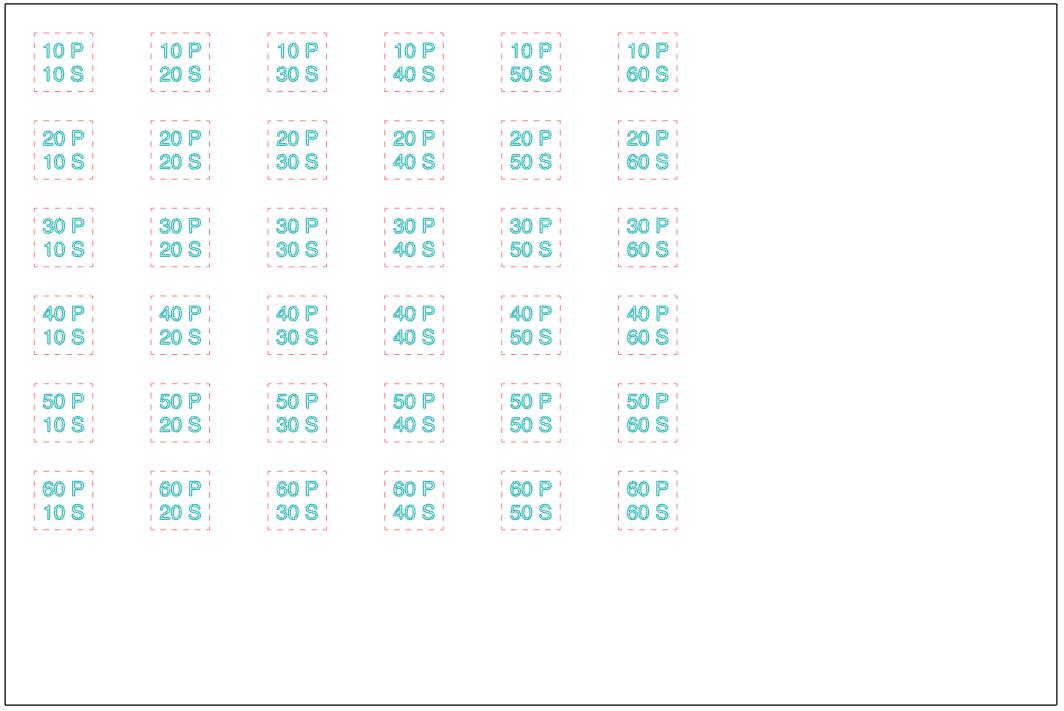Work Progress
For this week, I start with characterizing the laser cutter’s focus, power, speed, rate, kerf, and joint clearance by testing
different combination of the cutting speed and power. The test range for parameters is Power: 10-60 and Speed:10-60.
This is the layout we use for testing:

Based on the results of the first test, we came to the following conclusion: the stronger the power, or the slower the speed,
the deeper the cutting depth and width. At the same time, we also noticed that the dotted line contour of each testing group was
not cut as we expected. Compared with the solid line under the same speed and power Settings, the dotted line was not affected
by power and speed when being cut. I am not sure about the actual reason for this, but probably because the dotted line is too
fragmented.
In the second test, we want to verify the previous results again. We compared the four exemplified groups (10p 10s,
60p 10s, 10p 60s and 60p 60s). This time, the results were more intuitive. The kerf width of the 10p 10s group was approximately
between 0.5mm and 0.8mm, while the kerf width of the 60p 10s group was wider between 0.8mm and 1mm.
I am interested in how 2D pieces
can be transformed into adaptive 3D objects, thus I came up with an idea of folding an adaptive truncated octahedron.Truncated
octahedron is a very interesting geometry, consisting of six squares and eight regular hexagon faces. Because of the somewhat
symmetrical nature of each face, it is also a permutohedron that can fill the entire three-dimensional space independently.
The structure itself is reproducible, quantifiable, stackable, and can be unrolled as a spatial geometry into 2d shapes and quickly
assembled by folding. Thus, I would like to see the application of this stable and efficient crystalline structure in architecture,
especially in prefabricated unit construction.
My precedents:

My design process in rhino and grasshopper:



When preparing the laser-cut file, I separate the layer into score and cut. The outer contour lines marked with solid lines need to be cut completely, but the dotted lines (crease lines) need to remain connected. The first cut, I used cardboard to cut a face, but unfortunately the thickness of the cardboard didn't allow me to fold, so I chose chipboard for my second try.
I basically got the effect I wanted, except that I ripped off some corners too hard when I folded.
Here's a tip of folding chipboard. It is very easy to get the folding effect by pressing the folding line down on the edge of the table, which is much convenient compared with folding by hands. In the assembly part, I found that the press fit joint was not as strong as I had imagined. Although it was able to construct the octahedron shape without using adhesive, I still used some glue in some places to avoid the octahedron falling apart too easily.
Final output:


Vinyl Cutter: decorate my dorm

My boyfriend helped me install it on the wall.

HTML Version 1
